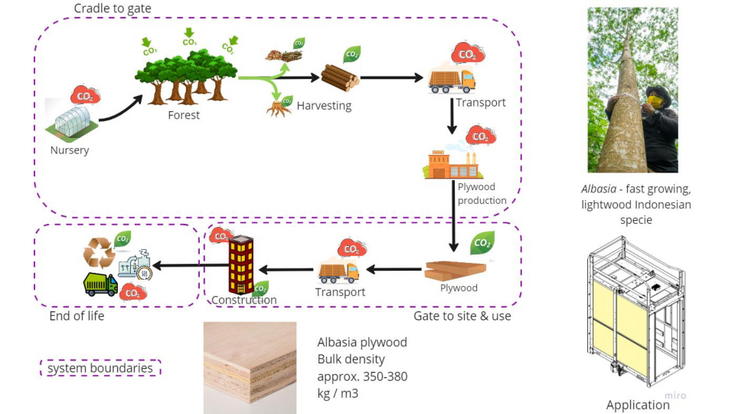Biogenic Carbon accounting in Life Cycle Assessment in context of mid-life harvested wood products and their climate change mitigation potential
SUPERVISOR: Stefan Petrus SALHOFER
PROJECT ASSIGNED TO: Slobodan STOJIC
The construction industry is responsible for more than a third of global resource consumption, 40% of energy consumption and 36% of total CO2 emissions. This sends a clear message that the transition towards more sustainable construction materials especially is needed. Harvested wood products (HWPs) are considered not just as renewable material but also as alternatives to conventional ones (concrete and steel) due to their lower environmental impact. Especially in terms of today's relevant topics - Carbon emissions and energy usage.
Capability of trees to sequester CO2 and store it in timber (HWPs) is praised as a solution for climate change mitigation because of temporary avoidance of certain radiative forcing. On the other hand , the carbon stored in HWPs is also considered to be a part of the overall carbon cycle, as it is eventually released back to the atmosphere through decomposition or combustion. The accounting of biogenic GHGs emissions currently is rarely done because of assumed carbon neutrality of HWPs. The GHG analysis of HWPs frequently assumes carbon neutrality, i.e. the carbon sequestered by biomass is equal to the carbon released by the use of that biomass. However, this approach ignores the rotation period which can be long for HWPs such as beams and planks. Furthermore, it ignores the benefits of storing carbon during HWPs product’s life cycle and delayed emission neglecting the dynamic nature of biogenic carbon. This is especially visible in the Life Cycle Assessment (LCA) of the HWPs.
The goal of the doctoral thesis is to address the issue of biogenic carbon accounting in LCA and map biogenic carbon content through the life cycle of Albasia plywood. Case study where Albasia plywood is applied is elevator construction where plywood sheets are to substitute aluminium sheets. Besides biogenic carbon, the doctoral thesis is aiming to assess environmental benefits of material substitution, in this case bio based for conventional.

